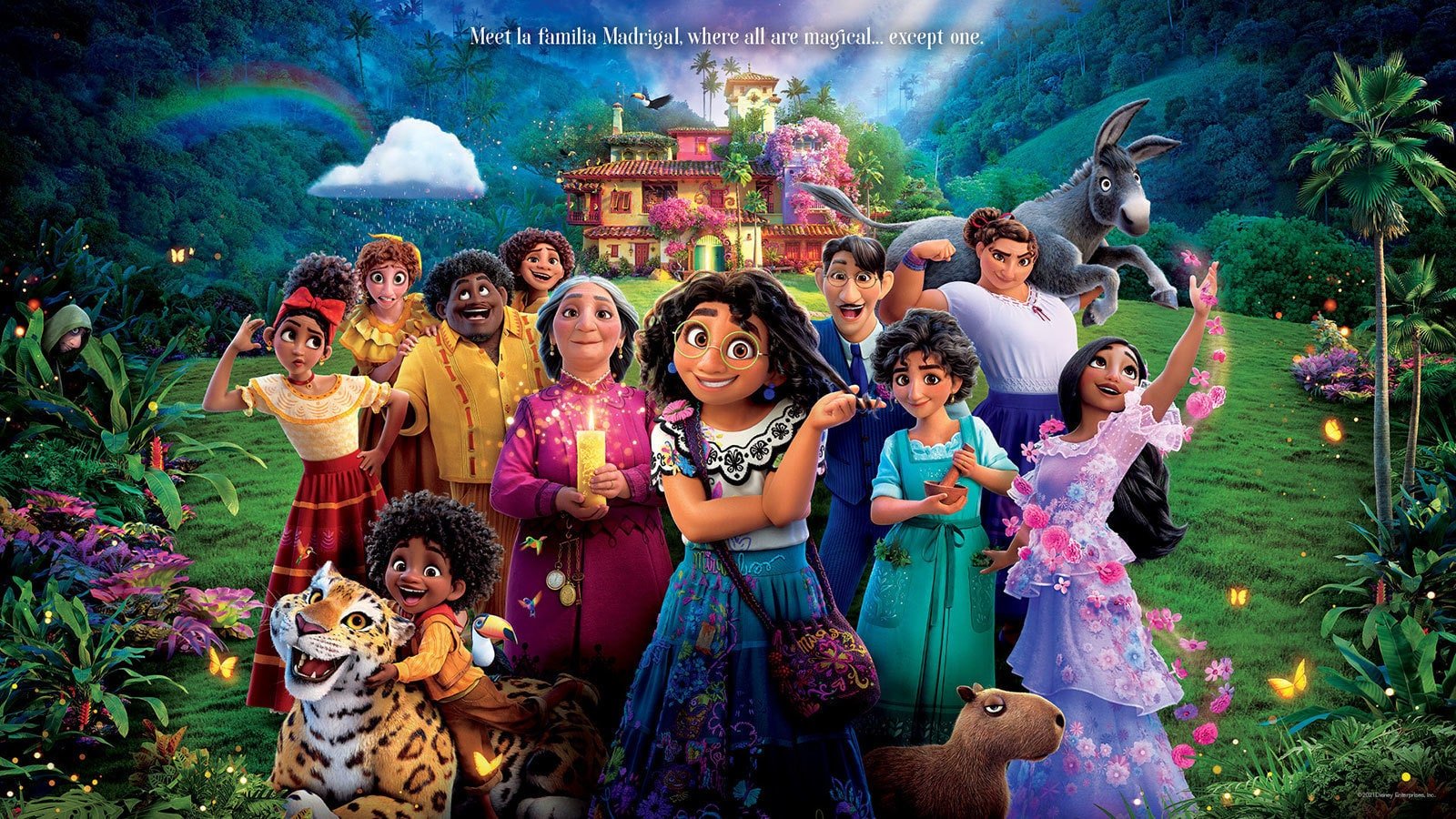Encanto Film Review
ANASOFIA GIRARDOT | JAN. 11, 2022 | ARTS AND ENTERTAINMENT
Colombia is many things: a Hispanic nation on the top corner of South America, Shakira’s birthplace, and the best source for a good cup of coffee. Even with the myriad of labels that often swirl around its existence, none of them capture the innate, iridescent beauty woven within its fabric. There’s profound history, such as the indigenous Muiscas who were the creators of the legendary “El Dorado” myth through their cacique ritual, along with diverse arrays of nature spanning across its vast ecological landscapes. But most importantly and above these characteristics, Colombia’s true identity is built on its unique people and the rich heritage they have nurtured.
In a moment of serious creative insight after producing only two movies with a Latin American setting, Disney’s newest film “Encanto” pays incredible homage to Colombia and sets an unprecedented standard on how to properly depict a foreign culture. Located within the luscious zona cafetera or “coffee zone,” the movie introduces spirited protagonist, Mirabel Madrigal, and her magically inclined family who takes residence in an equally whimsical house, affectionately nicknamed “casita,” where they protect and provide for the local townspeople. Even though she can’t lift mountains or talk to animals like her relatives, Mirabel’s unwavering support for her family is just as powerful as their supernatural gifts. But cracks in the Madrigal household’s foundation arise once the living casita suddenly deteriorates and causes their abilities to dissipate, leaving the giftless Mirabel to save her family and their legacy.
With a catchy soundtrack, ravishing aesthetic visuals, and a moving plot, “Encanto” whisked me onto a riveting and nostalgic journey through a place dear to me. Even if the cultural background cemented within the movie isn’t familiar to most viewers, it still manages to grab the deepest emotional chords and leaves them intertwined within the multicolored layers of the film’s beautifully rich story.
As someone who feels deeply connected with their Colombian culture, experiencing the movie left me more impacted than I expected. Within the American film industry, Hispanic countries like Colombia are often caricatured as a clump of identical nations, doing a horrendous disservice to their individual cultures and people. Instead of following this ignorant formula, the producers of “Encanto” not only treated Colombia with necessary respect, but went beyond by superbly depicting its countless facets in creative ways. I could easily spot dishes familiar to me, like ajiaco soup and arepas, along with traditional campesino attire such as woolen ponchos called “ruanas” and colorfully frilled skirts. These direct references to Colombian culture are plentiful throughout the film and gives justice to its exquisite identity, from the delicious cuisine to the character diversity and customary lifestyles.
Besides representing Colombian culture with devoted accuracy, the genius of “Encanto” also stems from the dedication and ingenuity that brought the film to its distinctive state. Led by a team of 800 animators, designers, and musicians, the movie was largely based on firsthand research collected from their travels to Colombia. At first they focused on magical realism for the story’s content and aesthetic, before branching out towards the local architecture, distinct botanical features, and music.
An extensive amount of their research was specifically targeted toward the sounds and melodies hailing from Colombia’s various regions. With the eclectic combination of cumbia and reggaeton, music producer Lin-Manuel Miranda created a perfect soundtrack through unforgettable songs like “The Family Madrigal'' and my personal favorite “We Don’t Talk About Bruno.” Furthermore, voice actors like Stephanie Beatriz, John Leguizamo, and María Cecilia Botero captured the vibrant and dynamic essences of their characters through compelling performances.
In the center of these dazzling theatrical displays though is the film’s crucial theme on generational trauma and its consequences, an issue resonant within the Latin American community. Even though its presence is at first hidden by the seemingly perfect lives of the Madrigal family, it gradually unravels through Mirabel’s quest and culminates in a beautiful message of healing through love.
Although “Encanto” is just a single piece in the extensive Disney catalog and hasn’t garnered its fair due of public attention yet, it still succeeds in being one of their most accomplished works from an artistic and monetary viewpoint. From the enchanting graphics and designs to the touching story, this movie has demonstrated an unprecedented level of excellence and starkly raised the bar for all animated movies to come. But most importantly, it honored an extraordinary country that is often misunderstood and produced a movie truly worthy of its depiction.
